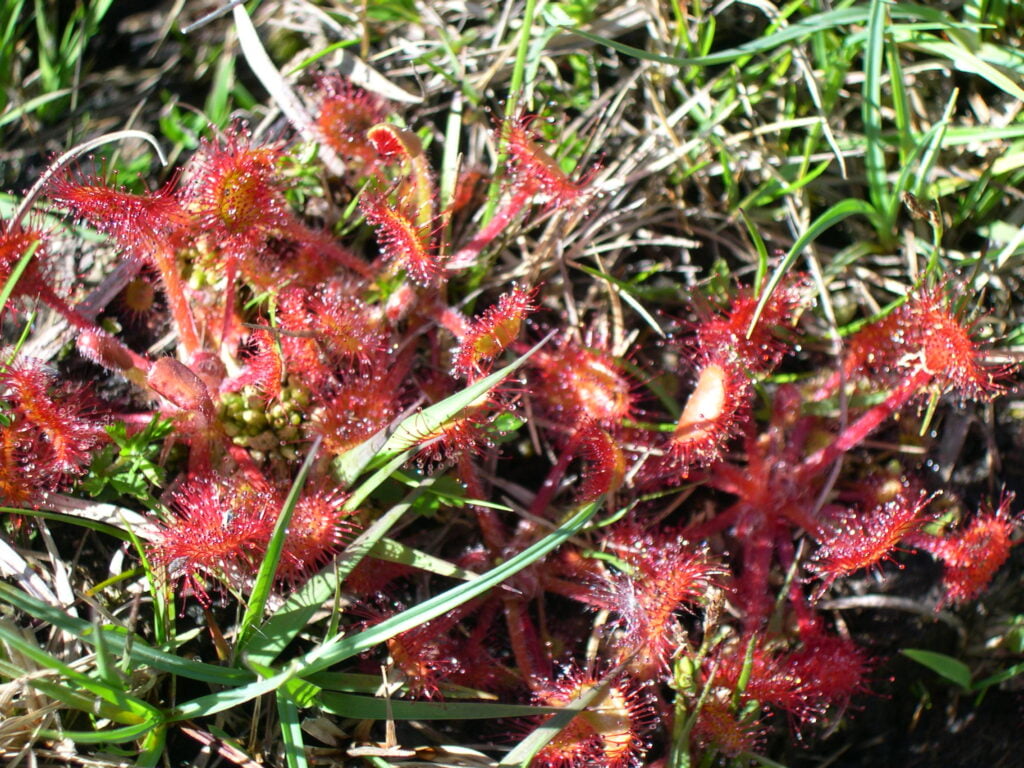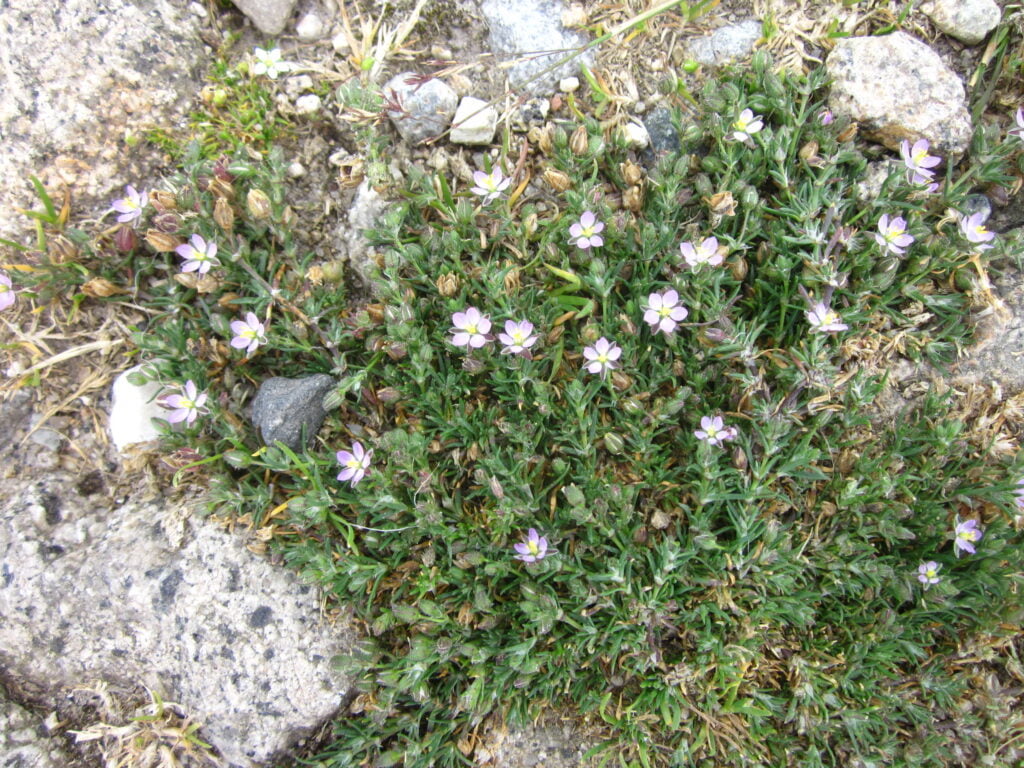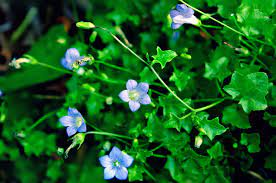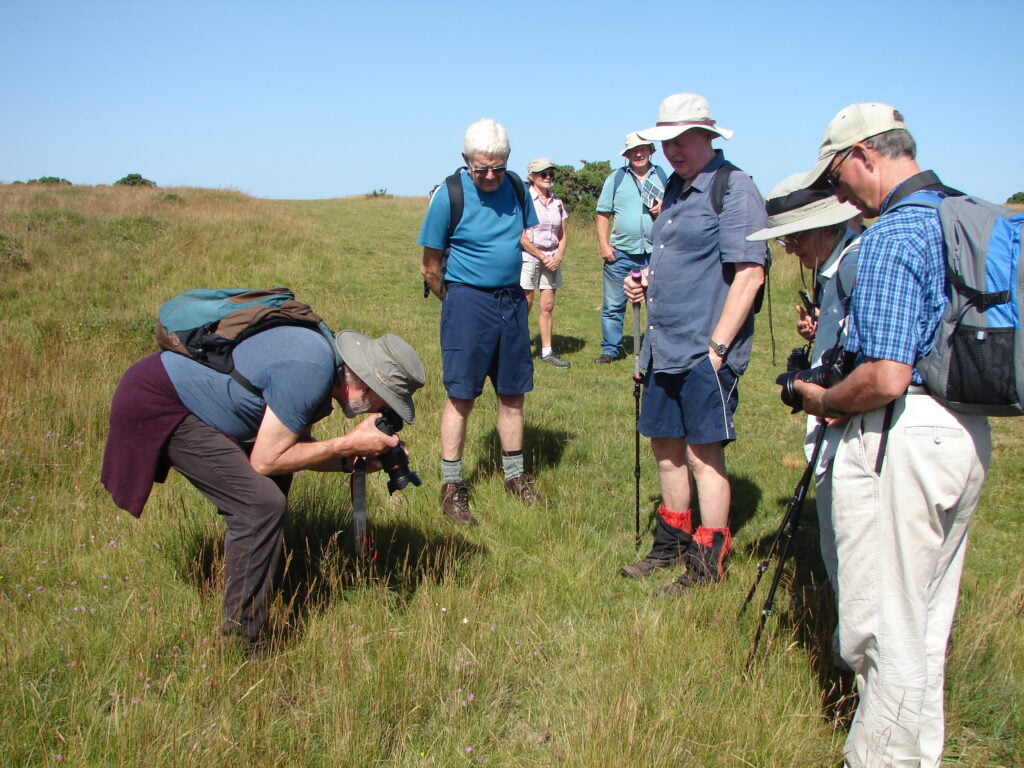
On 22 April 1882 a ‘Public Botanical Walk’ took place in North Devon. It was the first of many undertaken in the summer months in that part of the world, with reports on the botanists’ findings appearing in the North Devon Journal. In early 1905, not long before the 24th season of these walks began, Eden Phillpotts published the latest in what became known as his Dartmoor Cycle of novels, the powerful melodrama The Secret Woman. The tragic story was set around Belstone and the East Okement valley and included vivid descriptions of the landscape, granite workings, fauna and flora. Someone among the North Devon botanists was clearly inspired by the novel as the group visited the area on Saturdays 3 June and 8 July 1905 to see for themselves. The July walk followed a route from Okehampton station to Belstone, over Belstone Tor to Cullever Steps on the East Okement River, past East Okement Farm to New Bridge on the Black-a-ven Brook, then to the summits of High Willhays and Yes Tor before returning to the station by way of the Red-a-ven Brook, Moor Brook and Fitz’s Well. The report of this walk in the North Devon Journal lists 19 plants as being ‘among the more noteworthy gathered’ (see List 1).
On Saturday 16 July 2022, Bill Murray, Chair of the Dartmoor Society, organised a shorter variation of the July excursion for the Society with the aim of seeing how many of the 1905 plants could be found (‘gathering’ being long frowned upon), whether any ‘new’ plants had become established and to consider the reasons for any changes. The walk was led by Belstone’s Andrew Terry. Since 2008 he has curated a species list of Belstone which originated with a Biodiversity Audit of the parish professionally conducted for Devon County Council. The initial list of plants in this audit (from a single site visit on 9 December 2006) numbered 62 species; to date Andrew has found and added another 156 species to the list (including eight garden escapees, introduced or non-native species), during which he has gained an excellent knowledge of where to find moorland flora, especially bog plants. The full list and audit report can be viewed on the Belstone village website. Other experienced botanists on the walk included Endymion Beer, Hilary Marshall and Janet Wellingham.
The present-day walk started and ended at Belstone. Leaving the village on a hot and sunny day we immediately encountered a plant that would not have appeared in 1905 – the invasive Himalayan Balsam, which, despite efforts to eradicate it by Belstone Commoners in previous years, was flowering profusely below Great Green (this patch probably originated from the garden at Tawcroft (built in 1908), further upstream beside the River Taw). In the same area, and spreading ever-upwards over many parts of Dartmoor, was the ubiquitous bracken – greater numbers of cattle and cutting by commoners for animal bedding in 1905 would have kept this species more under control than now.
In an area of damp ground about 100 metres west of the upper Birchy Lake moorgate we found the first of many flowering sundew, plus tormentil, bog pimpernel and ivy-leaved bellflower. A little further west was a tiny colony of pale butterwort. As we passed the Nine Maidens stone circle several grayling butterflies were seen. Stonechats were the commonest bird on the walk, families scolding us as we passed through their territories. On the stony, dry and dusty track leading from Cullever Steps past Winter Tor and again on the ‘benignly neglected’ (ie tarmac removed years ago) Army ring road south of East Okement Farm we found the tiny flowers of red sand spurrey – as a non-botanist I was impressed, as often on the walk, at the ability of the experts in our party to find and identify such specimens, often on their knees with magnifiers and guidebooks, plants that on my own I would have either trodden on by accident or passed by without seeing.
By the ford across the East Okement at the southern end of Skit Bottom was a splendid area of boggy ground including both sorts of cotton-grass, bulbous rush, lesser spearwort, bogbean, bog asphodel, St John’s wort and a late flowering heath spotted-orchid. Dartmoor photographer and film maker Chris Chapman cooled off with a paddle at the ford, ignoring the leeches which some of us spotted, before returning to the bank with a newt.
As well as it being too far to walk on a hot day, the 1905 trek to High Willhays and Yes Tor was not repeated, as the consensus was that these areas of the high north moor would be lacking in species diversity, being dominated in recent decades by the spread of purple moor grass (Molinia). Instead Andrew led us back past Cullever Steps to some more species-rich boggy areas on the east side of West Cleave above the East Okement. Here we found good numbers of common marsh bedstraw – although some in the party thought it was fen bedstraw.The final find of the day also caused a lively post-walk discussion – were these fleshly green insect-catching leaves those of the rare common butterwort or the rarer large-flowered butterwort, a further reminder of the difficulties of identification based on a single visit when a plant is not in flower.
In all, Bill Murray’s final list numbered 48 species, with nine of the 1905 list found – bog asphodel, ivy-leaved bellflower, pale butterwort, round-leaved crowfoot (called ivy-leaved water-crowfoot in 1905), bog pimpernel, marsh St John’s wort and sundew (see List 2). Overall the feeling was that the current diversity of species was encouragingly high, albeit in isolated pockets rather than across the moor as a whole.
List 1: The ‘more noteworthy plants gathered’ on 8 July 1905;
Bog asphodel (Narthecium ossifragum); Bog pimpernel (Anagallis tenella); Bristle-leaved bent-grass (Agrostis setacca); Chocolate-headed club-rush (Scirpus pauciflorus); Dwarf bent-grass (Agrostis pumila); Hare’s tail cotton-grass (Eriophorum vaginatum); Heath-grass (Sieglingia decumbens); Heath rush (Juncus squarrosus); Ivy-leaved bellflower (Cervicina hederacea); Larger ivy-leaved water-crowfoot (Ranunculus lenormandi); Marsh speedwell (Veronica scutellata); Marsh St John’s wort (Hypericum elodes); Mat-grass (Nardus stricta); Mountain groundsel (Senecio sylvaticus); Pale butterwort (Pinguicula lusitanica); Short-fruited square-stemmed willow-herb (Epilobium obscurum); Small bird’s-foot (Ornithopus perpusillus); Sundew (Drosera rotundifolia); and Tawny sedge (Carex hornschuchiana).
List 2: Noteworthy species seen on 16 July 2022 (names in bold also appear in the 1905 list, so their scientific name is not repeated unless since changed by botanists); Bell heather (Erica cinerea); Bird’s-foot trefoil (Lotus corniculatus); Bogbean (Menyanthes trifoliata); Bog asphodel; Bog pimpernel; Bracken (Pteridium aquilinum); Broad leaved willowherb (Epilobium montanum); Bulbous rush (Juncus bulbosus); Common butterwort (Pinguicula vulgaris); Common cotton-grass (Eriophorum angustifolium); Common marsh bedstraw (Galium palustre); Cross-leaved heath (Erica tetralix); Enchanter’s nightshade (Circaea lutetiana); Eyebright (Euphrasia officinalis); Foxglove (Digitalis purpurea); Green-ribbed sedge (Carex binervis); Hard rush (Juncus inflexus); Hare’s tail cotton-grass;Heath bedstraw (Galium saxatile); Heath milkwort (Polygala serpyllifolia); Heath pearlwort (Sagina subulata); Heath rush; Heath spotted-orchid (Dactylorhiza maculata); Herb robert (Geranium robertianum);Himalayan balsam (Impatiens glandulifera); Ivy-leaved bellflower (Hesperocodon hederaceus); Lesser hawkbit (Leontodon saxatilis); Lesser spearwort (Ranunculus flammula); Lousewort (Pedicularis sylvatica); Marsh horsetail (Equisetum palustre); Marsh pennywort (Hydrocotyle vulgaris); Marsh St John’s wort;Marsh thistle (Cirsium palustre); Marsh violet (Viola palustris); Monkey flower (Mimulus guttatus); Mouse-ear hawkweed (Pilosella officinarum); Pale butterwort; Red sand spurrey (Spergularia rubra); Round-leaved water-crowfoot (Ranunculus omiophyllus) (Larger ivy-leaved water-crowfoot in 1905 list); Round leaved sundew; Self-heal (Prunella vulgaris); Sheepsbit (Jasione montana); Tormentil (Potentilla erecta); Water forget-me-not (Myosotis scorpioides); Water mint (Mentha aquatica); Water pepper (Persicaria hydropiper); Wild thyme (Thymus polytrichus); and Yarrow (Achillea millefolium).
Chris Walpole’s description of a Belstone Botanical Walk 16th July 2022





